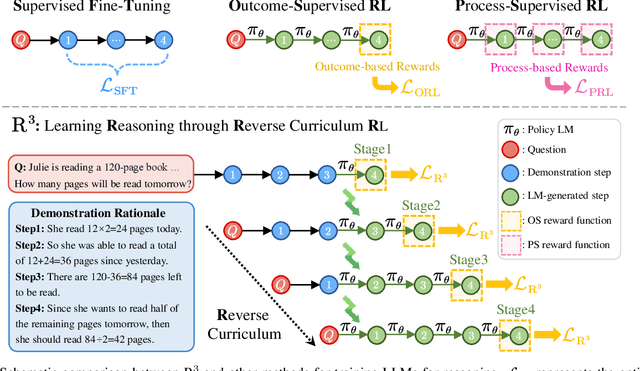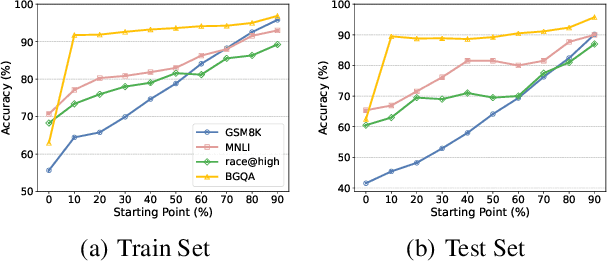Honglin Guo
TRCE: Towards Reliable Malicious Concept Erasure in Text-to-Image Diffusion Models
Mar 10, 2025Abstract:Recent advances in text-to-image diffusion models enable photorealistic image generation, but they also risk producing malicious content, such as NSFW images. To mitigate risk, concept erasure methods are studied to facilitate the model to unlearn specific concepts. However, current studies struggle to fully erase malicious concepts implicitly embedded in prompts (e.g., metaphorical expressions or adversarial prompts) while preserving the model's normal generation capability. To address this challenge, our study proposes TRCE, using a two-stage concept erasure strategy to achieve an effective trade-off between reliable erasure and knowledge preservation. Firstly, TRCE starts by erasing the malicious semantics implicitly embedded in textual prompts. By identifying a critical mapping objective(i.e., the [EoT] embedding), we optimize the cross-attention layers to map malicious prompts to contextually similar prompts but with safe concepts. This step prevents the model from being overly influenced by malicious semantics during the denoising process. Following this, considering the deterministic properties of the sampling trajectory of the diffusion model, TRCE further steers the early denoising prediction toward the safe direction and away from the unsafe one through contrastive learning, thus further avoiding the generation of malicious content. Finally, we conduct comprehensive evaluations of TRCE on multiple malicious concept erasure benchmarks, and the results demonstrate its effectiveness in erasing malicious concepts while better preserving the model's original generation ability. The code is available at: http://github.com/ddgoodgood/TRCE. CAUTION: This paper includes model-generated content that may contain offensive material.
Better Process Supervision with Bi-directional Rewarding Signals
Mar 06, 2025Abstract:Process supervision, i.e., evaluating each step, is critical for complex large language model (LLM) reasoning and test-time searching with increased inference compute. Existing approaches, represented by process reward models (PRMs), primarily focus on rewarding signals up to the current step, exhibiting a one-directional nature and lacking a mechanism to model the distance to the final target. To address this problem, we draw inspiration from the A* algorithm, which states that an effective supervisory signal should simultaneously consider the incurred cost and the estimated cost for reaching the target. Building on this key insight, we introduce BiRM, a novel process supervision model that not only evaluates the correctness of previous steps but also models the probability of future success. We conduct extensive experiments on mathematical reasoning tasks and demonstrate that BiRM provides more precise evaluations of LLM reasoning steps, achieving an improvement of 3.1% on Gaokao2023 over PRM under the Best-of-N sampling method. Besides, in search-based strategies, BiRM provides more comprehensive guidance and outperforms ORM by 5.0% and PRM by 3.8% respectively on MATH-500.
CritiQ: Mining Data Quality Criteria from Human Preferences
Feb 26, 2025Abstract:Language model heavily depends on high-quality data for optimal performance. Existing approaches rely on manually designed heuristics, the perplexity of existing models, training classifiers, or careful prompt engineering, which require significant expert experience and human annotation effort while introduce biases. We introduce CritiQ, a novel data selection method that automatically mines criteria from human preferences for data quality with only $\sim$30 human-annotated pairs and performs efficient data selection. The main component, CritiQ Flow, employs a manager agent to evolve quality criteria and worker agents to make pairwise judgments. We build a knowledge base that extracts quality criteria from previous work to boost CritiQ Flow. Compared to perplexity- and classifier- based methods, verbal criteria are more interpretable and possess reusable value. After deriving the criteria, we train the CritiQ Scorer to give quality scores and perform efficient data selection. We demonstrate the effectiveness of our method in the code, math, and logic domains, achieving high accuracy on human-annotated test sets. To validate the quality of the selected data, we continually train Llama 3.1 models and observe improved performance on downstream tasks compared to uniform sampling. Ablation studies validate the benefits of the knowledge base and the reflection process. We analyze how criteria evolve and the effectiveness of majority voting.
AgentGym: Evolving Large Language Model-based Agents across Diverse Environments
Jun 06, 2024



Abstract:Building generalist agents that can handle diverse tasks and evolve themselves across different environments is a long-term goal in the AI community. Large language models (LLMs) are considered a promising foundation to build such agents due to their generalized capabilities. Current approaches either have LLM-based agents imitate expert-provided trajectories step-by-step, requiring human supervision, which is hard to scale and limits environmental exploration; or they let agents explore and learn in isolated environments, resulting in specialist agents with limited generalization. In this paper, we take the first step towards building generally-capable LLM-based agents with self-evolution ability. We identify a trinity of ingredients: 1) diverse environments for agent exploration and learning, 2) a trajectory set to equip agents with basic capabilities and prior knowledge, and 3) an effective and scalable evolution method. We propose AgentGym, a new framework featuring a variety of environments and tasks for broad, real-time, uni-format, and concurrent agent exploration. AgentGym also includes a database with expanded instructions, a benchmark suite, and high-quality trajectories across environments. Next, we propose a novel method, AgentEvol, to investigate the potential of agent self-evolution beyond previously seen data across tasks and environments. Experimental results show that the evolved agents can achieve results comparable to SOTA models. We release the AgentGym suite, including the platform, dataset, benchmark, checkpoints, and algorithm implementations. The AgentGym suite is available on https://github.com/WooooDyy/AgentGym.
Code Needs Comments: Enhancing Code LLMs with Comment Augmentation
Feb 20, 2024Abstract:The programming skill is one crucial ability for Large Language Models (LLMs), necessitating a deep understanding of programming languages (PLs) and their correlation with natural languages (NLs). We examine the impact of pre-training data on code-focused LLMs' performance by assessing the comment density as a measure of PL-NL alignment. Given the scarcity of code-comment aligned data in pre-training corpora, we introduce a novel data augmentation method that generates comments for existing code, coupled with a data filtering strategy that filters out code data poorly correlated with natural language. We conducted experiments on three code-focused LLMs and observed consistent improvements in performance on two widely-used programming skill benchmarks. Notably, the model trained on the augmented data outperformed both the model used for generating comments and the model further trained on the data without augmentation.
Training Large Language Models for Reasoning through Reverse Curriculum Reinforcement Learning
Feb 08, 2024



Abstract:In this paper, we propose R$^3$: Learning Reasoning through Reverse Curriculum Reinforcement Learning (RL), a novel method that employs only outcome supervision to achieve the benefits of process supervision for large language models. The core challenge in applying RL to complex reasoning is to identify a sequence of actions that result in positive rewards and provide appropriate supervision for optimization. Outcome supervision provides sparse rewards for final results without identifying error locations, whereas process supervision offers step-wise rewards but requires extensive manual annotation. R$^3$ overcomes these limitations by learning from correct demonstrations. Specifically, R$^3$ progressively slides the start state of reasoning from a demonstration's end to its beginning, facilitating easier model exploration at all stages. Thus, R$^3$ establishes a step-wise curriculum, allowing outcome supervision to offer step-level signals and precisely pinpoint errors. Using Llama2-7B, our method surpasses RL baseline on eight reasoning tasks by $4.1$ points on average. Notebaly, in program-based reasoning on GSM8K, it exceeds the baseline by $4.2$ points across three backbone models, and without any extra data, Codellama-7B + R$^3$ performs comparable to larger models or closed-source models.
CoLLiE: Collaborative Training of Large Language Models in an Efficient Way
Dec 01, 2023



Abstract:Large language models (LLMs) are increasingly pivotal in a wide range of natural language processing tasks. Access to pre-trained models, courtesy of the open-source community, has made it possible to adapt these models to specific applications for enhanced performance. However, the substantial resources required for training these models necessitate efficient solutions. This paper introduces CoLLiE, an efficient library that facilitates collaborative training of large language models using 3D parallelism, parameter-efficient fine-tuning (PEFT) methods, and optimizers such as Lion, Adan, Sophia, LOMO and AdaLomo. With its modular design and comprehensive functionality, CoLLiE offers a balanced blend of efficiency, ease of use, and customization. CoLLiE has proven superior training efficiency in comparison with prevalent solutions in pre-training and fine-tuning scenarios. Furthermore, we provide an empirical evaluation of the correlation between model size and GPU memory consumption under different optimization methods, as well as an analysis of the throughput. Lastly, we carry out a comprehensive comparison of various optimizers and PEFT methods within the instruction-tuning context. CoLLiE is available at https://github.com/OpenLMLab/collie.
 Add to Chrome
Add to Chrome Add to Firefox
Add to Firefox Add to Edge
Add to Edge